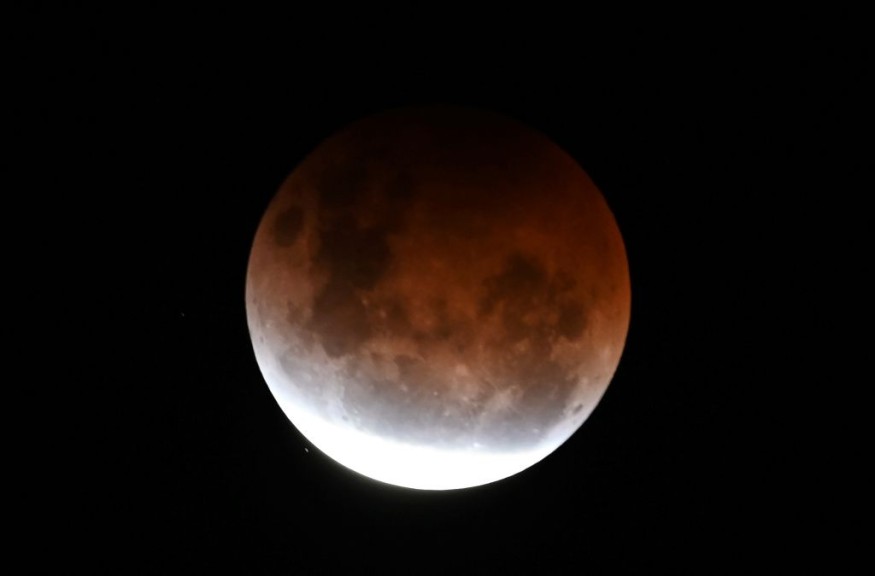The partial lunar eclipse happening on November 19 has been reported to be the longest occurrence of its kind in almost 600 years.
A Space.com report said that the partial lunar eclipse this month will reward patient observers of the sky with a view of a delicately changing moon.
It is also a must-see occurrence as it is this year's final eclipse. The moon, this report indicated, may even take on a "reddish hue."
Lunar eclipses happen when the moon passes into the shadow of Earth. In this circumstance, the partial eclipse phase will last for three hours, 28 minutes, and 24 seconds. Meanwhile, the full eclipse will last for six hours and one minute, making it the longest-running partial eclipse in 580 years, Indiana's Holcomb Observatory posted on Twitter.
LONGEST PARTIAL ECLIPSE of the CENTURY to occur in the Pre-dawn hours of November 19th. Maximum eclipse is at 4:03 AM EST when 97% of the Moon will be eclipsed. At that time it will be high in our western sky. This will also be the longest partial lunar eclipse in 580 years! pic.twitter.com/Xa9ciXLp3V
— Holcomb Observatory & Planetarium (@holcombobserv) November 7, 2021
The moon's face at maximum eclipse will be 97-percent covered by the Earth's shadow's deepest part, and perhaps, will become a deep red, explained the observatory.
The full moon of November is traditionally called the "Beaver Moon," as detailed in the Full Moon Phases site, because beavers prepare for winter, and thus, the Beaver Moon eclipse moniker of this month.
ALSO READ: Super Blood Moon, Total Lunar Eclipse 2021: Don't Miss These Phenomenon Gracing on May 26

The Partial Lunar Eclipse Phases
Lunar eclipses are long-running occurrences. This November 19 event, as mentioned roughly six hours and is expected to peak at 4:02 am EST. It can be viewed from North and South America, Australia, and portions of Asia and Europe.
Notably, according to NASA, the eclipse will occur in four major phases. The first phase in which the penumbral eclipse begins takes place at 1:02 am, in which the moon will go in a penumbra, on the moon's shadow's lighter part. This stage is typically difficult to spot even without special equipment due to the very slight darkening.
Then, in the second phase, the partial eclipse begins, where the moon will arrive at the shadow's darker part, known as the umbra, at 2:18 am EST. At 4:02 am EST, in the third phase, maximum eclipse is taking place before ending at 6:03 am EST.
Say one sees the entire eclipse, the moon will have different appearances at the event's different phases. While it is in the lighter part or penumbra of the shadow of the earth, it may be difficult to see anything at all, specifically if he lives in a light-polluted area.
However, as the moon moves nearer the deep shadow or umbra, it will start to darken, becoming a bit greyer compared to the usual.
Areas the Eclipse can be Viewed
As the moon reaches the eclipse's deepest part, it will likely turn a brown or dark red region as it will be 97 percent eclipsed at the peak.
The moon will not be covered all the way through, as the greatest eclipse's point there will still be an area close to the bottom of the moon, or top of it, if viewed through various types of telescopes in complete sunlight.
Depending on a person's location, one may not be able to view the entire eclipse. The whole sequence is evident for most of North and Central America, along with the fear east of Asia, though the Americas' eastern regions may be able to see the eclipse before the moon's exit from the umbral phase.
Lastly, South America will view most of the eclipse prior to moonset. Europe and western Africa will witness some of the beginning of the eclipse, and central Asia along with the southern Pacific and Australia will be able to view some of the eclipse surrounding moonrise. More details about certain regions and areas can be found on NASA's website.
Related information about the partial lunar eclipse on November 19 is shown on Now Next's YouTube video below:
Check out more news and information on Lunar Eclipse in Science Times.
© 2026 ScienceTimes.com All rights reserved. Do not reproduce without permission. The window to the world of Science Times.











